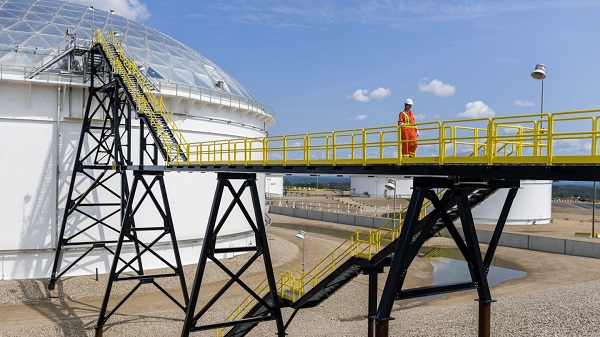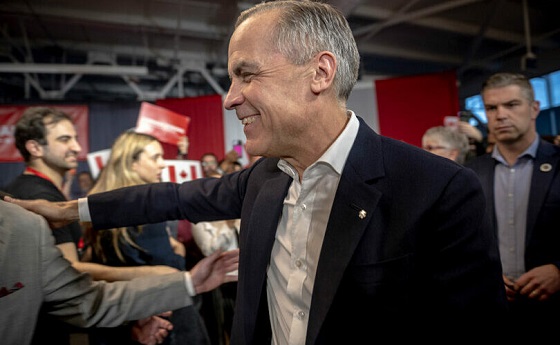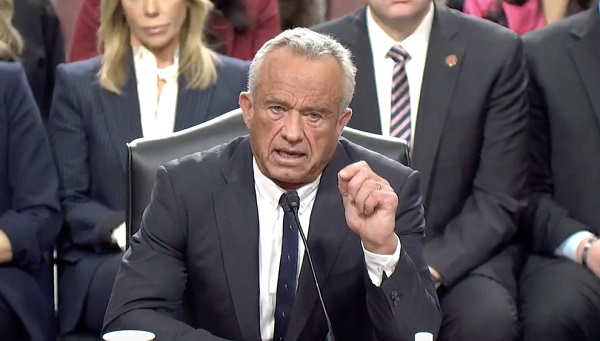Canadian Energy Centre
Why Canadian oil is so important to the United States

From the Canadian Energy Centre
Complementary production in Canada and the U.S. boosts energy security
The United States is now the world’s largest oil producer, but its reliance on oil imports from Canada has never been higher.
Through a vast handshake of pipelines and refineries, Canadian oil and U.S. oil complement each other, strengthening North American energy security.
Here’s why.
Decades in the making
Twenty years ago, the North American energy market looked a lot different than it does today.
In the early 2000s, U.S. oil production had been declining for more than 20 years. By 2005, it dropped to its lowest level since 1949, according to the U.S. Energy Information Administration (EIA).
America’s imports of oil from foreign nations were on the rise.
But then, the first of two powerhouse North American oil plays started ramping up.
In Canada’s oil sands, a drilling technology called SAGD – steam-assisted gravity drainage – unlocked enormous resources that could not be economically produced by the established surface mining processes. And the first new mines in nearly 25 years started coming online.
In about 2010, the second massive play – U.S. light, tight oil – emerged on the scene, thanks to hydraulic fracturing technology.
Oil sands production jumped from about one million barrels per day in 2005 to 2.5 million barrels per day in 2015, reaching an average 3.5 million barrels per day last year, according to the Canada Energy Regulator.
Meanwhile, U.S. oil production skyrocketed from 5.5 million barrels per day in 2005 to 9.4 million barrels per day in 2015 and 13.3 million barrels per day in 2024, according to the EIA.
Together the United States and Canada now produce more oil than anywhere else on earth, according to S&P Global.
As a result, overall U.S. foreign oil imports declined by 35 per cent between 2005 and 2023. But imports from Canada have steadily gone up.
In 2005, Mexico, Saudi Arabia, Venezuela and Nigeria together supplied 52 per cent of U.S. oil imports. Canada was at just 16 per cent.
In 2024, Canada supplied 62 per cent of American oil imports, with Mexico, Saudi Arabia and Venezuela together supplying just 14 per cent, according to the EIA.
“Light” and “heavy” oil
Canadian and U.S. oil production are complementary because they are different from each other in composition.
Canada’s oil exports to the U.S. are primarily “heavy” oil from the oil sands, while U.S. production is primarily “light” oil from the Permian Basin in Texas and New Mexico.
One way to think of it is that heavy oil is thick and does not flow easily, while light oil is thin and flows freely – like orange juice compared to fudge.
The components that make the oil like this require different refinery equipment to generate products including gasoline, jet fuel and base petrochemicals.
Of the oil the U.S. imported from Canada from January to October last year, 75 per cent was heavy, six per cent was light, and the remaining 19 per cent was “medium,” which basically has qualities in between the two.
Tailored for Canadian crude
Many refineries in the United States are specifically designed to process heavy oil, primarily in the U.S. Midwest and U.S. Gulf Coast.
Overall, there are about 130 operable oil refineries in the United States, according to the American Fuel and Petrochemical Manufacturers.
The Alberta Petroleum Marketing Commission (APMC) estimates that 25 consistently use oil from Alberta.
According to APMC, the top five U.S. refineries running the most Alberta crude are:
- Marathon Petroleum, Robinson, Illinois (100% Alberta crude)
- Exxon Mobil, Joliet, Illinois (96% Alberta crude)
- CHS Inc., Laurel, Montana (95% Alberta crude)
- Phillips 66, Billings, Montana (92% Alberta crude)
- Citgo, Lemont, Illinois (78% Alberta crude)
Since 2010, virtually 100 per cent of oil imports to the U.S. Midwest have come from Canada, according to the EIA.
In recent years, new pipeline access and crude-by-rail have allowed more Canadian oil to reach refineries on the U.S. Gulf Coast, rising from about 140,000 barrels per day in 2010 to about 450,000 barrels per day in 2024.
U.S. oil exports
The United States banned oil exports from 1975 to the end of 2015. Since, exports have surged, averaging 4.1 million barrels per day last year, according to the EIA.
That is nearly equivalent to the 4.6 million barrels per day of Canadian oil imported into the U.S. over the same time period, indicating that Canadian crude imports enable sales of U.S. oil to global markets.
Future outlook
Twenty-five years from now, the U.S. will need to import virtually exactly the same amount of oil as it does today (7.0 million barrels per day in 2050 compared to 6.98 million barrels per day in 2023), according to the EIA.
2025 Federal Election
Canada’s pipeline builders ready to get to work

From the Canadian Energy Centre
“We’re focusing on the opportunity that Canada has, perhaps even the obligation”
It was not a call he wanted to make.
In October 2017, Kevin O’Donnell, then chief financial officer of Nisku, Alta.-based Banister Pipelines, got final word that the $16-billion Energy East pipeline was cancelled.
It was his job to pass the news down the line to reach workers who were already in the field.
“We had a crew that was working along the current TC Energy line that was ready for conversion up in Thunder Bay,” said O’Donnell, who is now executive director of the Mississauga, Ont.-based Pipe Line Contractors Association of Canada (PLCAC).
“I took the call, and they said abandon right now. Button up and abandon right now.
“It was truly surreal. It’s tough to tell your foreman, who then tells their lead hands and then you inform the unions that those three or four or five million man-hours that you expected are not going to come to fruition,” he said.

Workers guide a piece of pipe along the Trans Mountain expansion route. Photograph courtesy Trans Mountain Corporation
“They’ve got to find lesser-paying jobs where they’re not honing their craft in the pipeline sector. You’re not making the money; you’re not getting the health and dental coverage that you were getting before.”
O’Donnell estimates that PLCAC represents about 500,000 workers across Canada through the unions it works with.
With the recent completion of the Trans Mountain expansion and Coastal GasLink pipelines – and no big projects like them coming on the books – many are once again out of a job, he said.
It’s frustrating given that this could be what he called a “golden age” for building major energy infrastructure in Canada.
Together, more than 62,000 people were hired to build the Trans Mountain expansion and Coastal GasLink projects, according to company reports.
O’Donnell is particularly interested in a project like Energy East, which would link oil produced in Alberta to consumers in Eastern and Atlantic Canada, then international markets in the offshore beyond.
“I think Energy East or something similar has to happen for millions of reasons,” he said.
“The world’s demanding it. We’ve got the craft [workers], we’ve got the iron ore and we’ve got the steel. We’re talking about a nation where the workers in every province could benefit. They’re ready to build it.”

The “Golden Weld” marked mechanical completion of construction of the Trans Mountain Expansion Project on April 11, 2024. Photo courtesy Trans Mountain Corporation
That eagerness is shared by the Progressive Contractors Association of Canada (PCA), which represents about 170 construction and maintenance employers across the country.
The PCA’s newly launched “Let’s Get Building” advocacy campaign urges all parties in the Canadian federal election run to focus on getting major projects built.
“We’re focusing on the opportunity that Canada has, perhaps even the obligation,” said PCA chief executive Paul de Jong.
“Most of the companies are quite busy irrespective of the pipeline issue right now. But looking at the long term, there’s predictability and long-term strategy that they see missing.”
Top of mind is Ottawa’s Impact Assessment Act (IAA), he said, the federal law that assesses major national projects like pipelines and highways.
In 2023, the Supreme Court of Canada found that the IAA broke the rules of the Canadian constitution.
The court found unconstitutional components including federal overreach into the decision of whether a project requires an impact assessment and whether a project gets final approval to proceed.
Ottawa amended the act in the spring of 2024, but Alberta’s government found the changes didn’t fix the issues and in November launched a new legal challenge against it.
“We’d like to see the next federal administration substantially revisit the Impact Assessment Act,” de Jong said.
“The sooner these nation-building projects get underway, the sooner Canadians reap the rewards through new trading partnerships, good jobs and a more stable economy.”
Canadian Energy Centre
First Nations in Manitoba pushing for LNG exports from Hudson’s Bay

From the Canadian Energy Centre
By Will Gibson
NeeStaNan project would use port location selected by Canadian government more than 100 years ago
Building a port on Hudson’s Bay to ship natural resources harvested across Western Canada to the world has been a long-held dream of Canadian politicians, starting with Sir Wilfred Laurier.
Since 1931, a small deepwater port has operated at Churchill, Manitoba, primarily shipping grain but more recently expanding handling of critical minerals and fertilizers.
A group of 11 First Nations in Manitoba plans to build an additional industrial terminal nearby at Port Nelson to ship liquefied natural gas (LNG) to Europe and potash to Brazil.
Robyn Lore, a director with project backer NeeStaNan, which is Cree for “all of us,” said it makes more sense to ship Canadian LNG to Europe from an Arctic port than it does to send Canadian natural gas all the way to the U.S. Gulf Coast to be exported as LNG to the same place – which is happening today.
“There is absolutely a business case for sending our LNG directly to European markets rather than sending our natural gas down to the Gulf Coast and having them liquefy it and ship it over,” Lore said. “It’s in Canada’s interest to do this.”
Over 100 years ago, the Port Nelson location at the south end of Hudson’s Bay on the Nelson River was the first to be considered for a Canadian Arctic port.
In 1912, a Port Nelson project was selected to proceed rather than a port at Churchill, about 280 kilometres north.
The Port Nelson site was earmarked by federal government engineers as the most cost-effective location for a terminal to ship Canadian resources overseas.
Construction started but was marred by building challenges due to violent winter storms that beached supply ships and badly damaged the dredge used to deepen the waters around the port.
By 1918, the project was abandoned.
In the 1920s, Prime Minister William Lyon MacKenzie King chose Churchill as the new location for a port on Hudson’s Bay, where it was built and continues to operate today between late July and early November when it is not iced in.
Lore sees using modern technology at Port Nelson including dredging or extending a floating wharf to overcome the challenges that stopped the project from proceeding more than a century ago.
He said natural gas could travel to the terminal through a 1,000-kilometre spur line off TC Energy’s Canadian Mainline by using Manitoba Hydro’s existing right of way.
A second option proposes shipping natural gas through Pembina Pipeline’s Alliance system to Regina, where it could be liquefied and shipped by rail to Port Nelson.
The original rail bed to Port Nelson still exists, and about 150 kilometers of track would have to be laid to reach the proposed site, Lore said.
“Our vision is for a rail line that can handle 150-car trains with loads of 120 tonnes per car running at 80 kilometers per hour. That’s doable on the line from Amery to Port Nelson. It makes the economics work for shippers,” said Lore.
Port Nelson could be used around the year because saltwater ice is easier to break through using modern icebreakers than freshwater ice that impacts Churchill between November and May.
Lore, however, is quick to quell the notion NeeStaNan is competing against the existing port.
“We want our project to proceed on its merits and collaborate with other ports for greater efficiency,” he said.
“It makes sense for Manitoba, and it makes sense for Canada, even more than it did for Laurier more than 100 years ago.”
-

 2025 Federal Election2 days ago
2025 Federal Election2 days agoMark Carney Wants You to Forget He Clearly Opposes the Development and Export of Canada’s Natural Resources
-

 International2 days ago
International2 days agoPope Francis’ body on display at the Vatican until Friday
-

 Business2 days ago
Business2 days agoHudson’s Bay Bid Raises Red Flags Over Foreign Influence
-

 2025 Federal Election2 days ago
2025 Federal Election2 days agoCanada’s pipeline builders ready to get to work
-

 2025 Federal Election1 day ago
2025 Federal Election1 day agoFormer WEF insider accuses Mark Carney of using fear tactics to usher globalism into Canada
-

 2025 Federal Election13 hours ago
2025 Federal Election13 hours agoCarney’s Hidden Climate Finance Agenda
-

 COVID-191 day ago
COVID-191 day agoRFK Jr. Launches Long-Awaited Offensive Against COVID-19 mRNA Shots
-

 2025 Federal Election2 days ago
2025 Federal Election2 days agoCanada’s press tries to turn the gender debate into a non-issue, pretend it’s not happening






